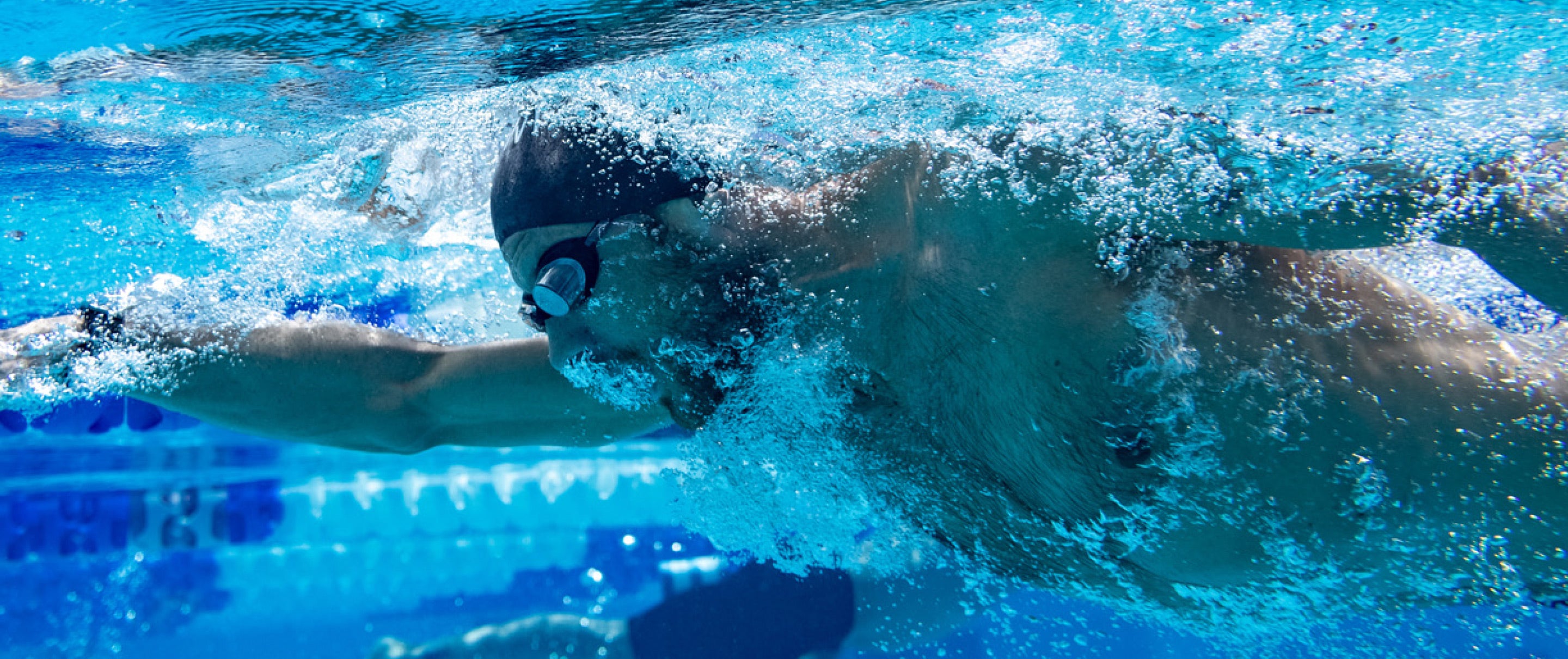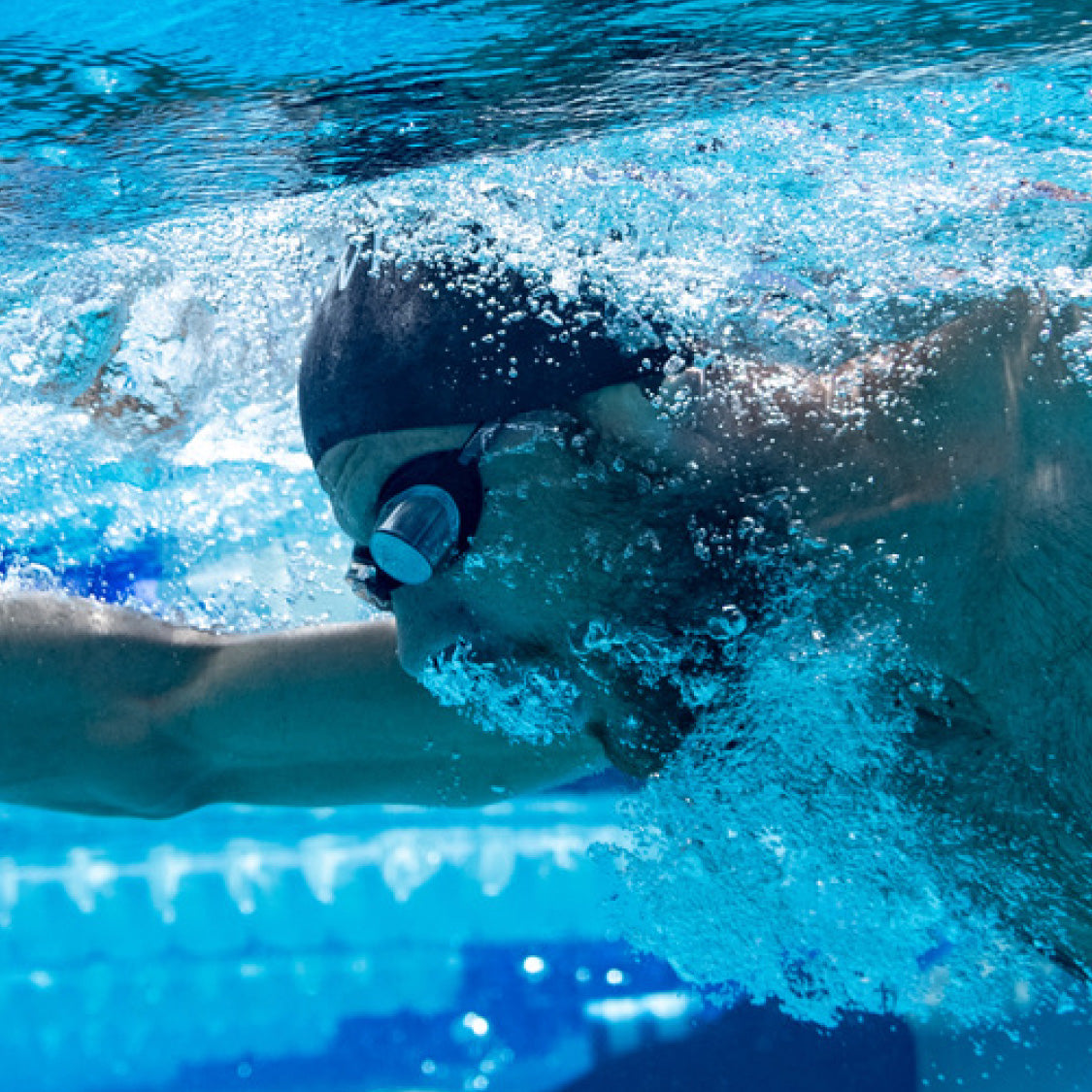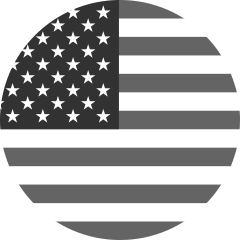Using Heart Rate Training Zones to Prepare for Your Next Race
There is a universal truth when it comes to performing in a race: you will race the way you train. Heart Rate Training Zones for swimming will help you prepare for the way that you want to race.
In this article, you will have a better understanding of how to match your training to the demands of your race, track your progress in the water using Heart Rate Training Zones and how you can effectively monitor and utilize your Heart Rate data during a race, such as a Triathlon or any long distance swim.
Understand the Demands of Your Race
Heart Rate Training Zones can provide you with the structure you need to prepare for a race. The table below provides an overview of the different Heart Rate Training Zones and how they can be used:

Check out our previous blog posts if you need more guidance on how to Set Your Heart Rate Training Zones for Swimming or How to Use Your Heart Rate Training Zones to Improve your Swim Training.
When preparing for a race, it is vital that you have a clear understanding of what the demands are and which Heart Rate Training Zones will help you the most in your preparation. Most importantly, take into consideration the duration of your race in order to determine what Heart Rate Training Zones you should prioritize. While all swimmers should have some Zone 1 training to ensure they are warming up and recovering for their workouts, here are three different examples that will highlight how Heart Rate Training Zones can be used in order to accomplish very different outcomes.
100 metres/yards
For a shorter, high intensity race you will need to practice at a high speed and at a high intensity level frequently throughout your training.
Shorter intervals (25’s/50’s) that are in Zone 4 (when you are fresh) and Zone 5 (when tired, like in the race) are ideal to practice. However, training at this intensity can carry a high cost to your body, so separating high intensity efforts by a couple of days, while including Zone 2 training to practice technique, will ensure that you recover appropriately from day to day.
5k Open Water Race
For most swimmers, this race will take longer than an hour to complete and therefore Zone 2 training should be a high priority. This will allow you to build longer and longer volumes until you are comfortable training at the race distance and longer. As you get closer to the race, some Zone 3 training will help prepare you for the long, consistent intensity required for the race.
If your goal is to excel at the race, and not just complete it, then you need to prepare to be able to lift your effort at the end in order to finish strong. Having some Zone 4/5 training, especially at the end of long sessions, will help you find that lift at the end of the race, while also lifting the ceiling of what you are capable of in your every day training.
Olympic-Distance Triathlon
Triathlons present an interesting dilemma for athletes. An Olympic distance triathlon may take 2-3 hours but you are swimming for only about 20-40 minutes and right at the start of the race. Therefore, unlike an Open Water swim race, you have to prepare to swim at a moderate, but uncomfortable, intensity for the whole swim ensuring that you have enough energy to lift your intensity for later parts of the race.
Similar to a long open water race, your training in Zone 2 should be prioritized. However, you will want to improve how you are swimming aerobically and save more energy for the other disciplines. Therefore, having consistent training in Zone 4 where you are pushing the bounds of your aerobic threshold is very beneficial. Zone 3 and Zone 5 training is typically deprioritized for the swim portion, although they may have benefits for the bike and run portions of your triathlon training1.

Track Your Progress Using Heart Rate Training Zones
Now that you've considered the relationship between what you are training for and what Heart Rate Training Zones to prioritize it is important to have some basic knowledge about how our heart adapts to aerobic exercise.
At the onset of any exercise, your heart rate will increase in order to send more blood to your muscles to meet the demands of the exercise. Over days and weeks of consistent exercise, your heart will adapt to the exercise you are doing by slowing down, allowing the heart to fill up with more blood so that each heart beat will send more blood, in fewer beats, to meet the same demand for your muscles. Therefore, monitoring your heart rate in relation to your swimming speed is vital to measuring your progress.
It is important to have points in your training where you will repeat a set to see how your performance has changed over time. There are 4 ways that you can measure your progress by monitoring your heart rate with your swimming speed.
Take a set of 10 x 100 Freestyle with 30 Seconds Rest, and let’s say that the first time you did it your average time was 1:45 at a heart rate of 150. With that as the baseline, here are the 4 ways you can measure your progress when you repeat the set:
- Go faster with the same Heart Rate.
- Holding 1:40’s instead of 1:45’s with the same 150 heart rate shows improvement in the performance level at the same intensity.
- Go the same speed with a lower Heart Rate
- Holding 1:45’s, but with a heart rate of 140, shows a gain in fitness so that holding the same time requires a lower intensity level
- Holding the same heart rate for longer distances
- Keeping the time and the heart rate the same, but increasing the set to 12 or 15 x 100 shows a gain in endurance by being able to maintain the same intensity for longer
- Recover faster from increases in Heart Rate
- The first time the set was done, maybe it took 60 seconds of rest for the heart rate to drop from 150 to 120, but the second time it took only 30 seconds. This shows that the body is adapting to the work and is recovering quicker from the exercise.
Using Your Heart Rate Data During a Race
By using Heart Rate Training Zones to track your progress while you are training, over time you will develop a good understanding of how hard you need to try to stay in each Heart Rate zone. It is important to listen to your body while you are training in these zones so that you can distinguish the differences between them while you are swimming. Swimming in Zone 2 may be comfortable, but will be tough for longer periods. Zone 5 training will also be tough but will feel completely different. Being attuned to how you are feeling between each of your Heart Rate Training Zones will help a lot when it comes time to race.
Most triathlon and open water races permit the athlete to receive live feedback about their performance as they race and you can take advantage of this with tracking your heart rate while you are swimming. However, for races hosted by FINA (competitive swimming’s governing body) you are not permitted to have devices that give you live feedback during the race. If you have any concerns about your equipment being legal for use in a race, it is a good idea to check in with the race director to answer any questions you may have.
FORM Smart Swim Goggles 2 have an integrated heart rate monitor so that you can get real-time feedback about your Heart Rate while you swim. You can still track your Heart Rate with the Smart Swim 1 goggles by attaching a Polar Verity or OH1 to the goggle strap.

Using Your Heart Rate Data During a Race
The focus here will be on how you can use your heart rate data during a triathlon, where it is permitted to get live feedback during your race.
As stated above, Zone 2 training is a priority for triathlons, and therefore you should plan for you heart rate to stay in Zone 2 for most of the swim portion of your triathlon. However, there are several things that can raise your heart rate before or during a race that you should be aware of:
- Nerves before your race
- Jostling for position at the start of the race may require more effort
- Going around buoys as part of the swim course
Don’t be concerned if your heart rate elevates as a result of these. As hard as it may seem, remember to relax and breathe. To help you relax while you are swimming, make sure you are blowing bubbles into the water and feel them go past you. This will help you stay relaxed while you are still in your race and you can watch your heart rate stabilize, or even decrease, as you calm down.
When you feel sufficiently settled, you should aim for the lower end of your Zone 2 heart rate (closer to 60% of your max) at the start of your race. This will ensure that you are starting comfortably and have room to put more energy into the later stages of your race.
As you swim at a steady intensity, your heart rate may creep up steadily which is normal even if you are well trained for the event, but try to keep your heart rate in Zone 2 throughout the course of the swim.
It is natural to want to pick up the pace as you finish the swim and get ready to transition. For some, picking up the speed in the final stretch of the swim is an important tactic to get the heart rate higher, specifically using your kick, in order to get the legs ready for the bike. What is most important is that you stay calm through the swim and are confident in the path you are going to take through transition. By using your Heart Rate Training Zones to guide you, you will be set-up for a great triathlon race.
References
- Baldassarre, Roberto & Bonifazi, Marco & Meeusen, Romain & Piacentini, Maria Francesca. (2018). The Road to Rio: A Brief Report of Training-Load Distribution of Open-Water Swimmers During the Olympic Season. International Journal of Sports Physiology and Performance. 14. 1-13. 10.1123/ijspp.2017-0845.












